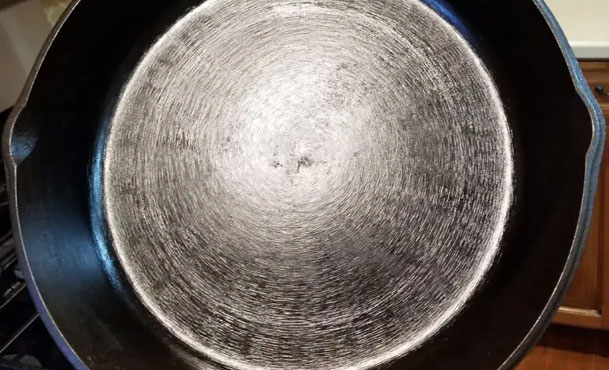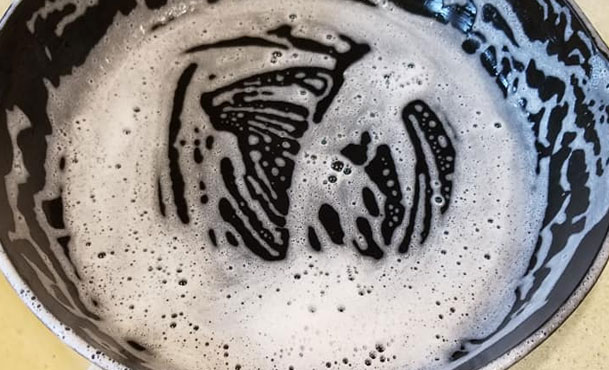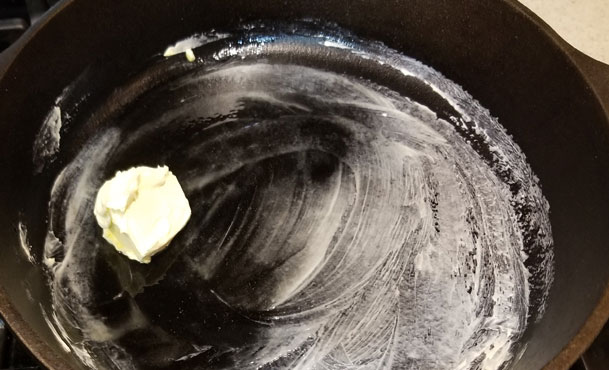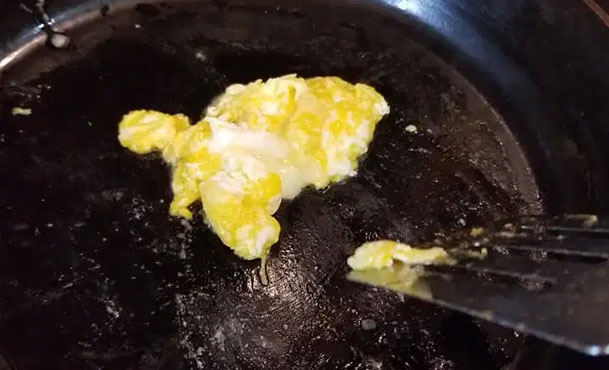
Culinary magazines have many articles on cooking with cast iron and the "How to" guide in proper cast iron cooking and keeping. I've been impressed with some of the articles, but only a very few. There are many articles out there that have misguided information regarding cast iron cooking that I wanted to shed some light on.
DON'T EVER USE SOAP ON CAST IRON!
FALSE!
You can use soap. Several years ago, soap contained an ingredient called lye. Lye would eat through the seasoning on cast iron. Lye is also what I use to strip the old seasoning off dirty cast iron. Today, soap does NOT contain lye. Thus, making it safe to use soap on cast iron. I encourage the use of soap on cast iron because food residue can go rancid and grow mold.
When the oil is applied to cast iron and baked past its smoke point, the oil is no longer oil-based. The oil turns in to a glass-like surface. After the seasoning has been added in layers, your pan turns into a non-stick surface. Adding soap to your pan will not strip off the seasoning because it's no longer oil.
After I cooked bacon on my cast iron skillet this morning, I used soap on my cast iron to wash it. My pan is completely covered in dish soap. I scrubbed my pan down with a sponge brush to get rid of bacon residue.

After I washed the soap off, I added two tablespoons of butter and allowed the pan to heat up for 3 to 5 minutes. Cast iron does not distribute heat evenly. This is why cast iron needs time to heat up before placing your product in the pan.

When the butter is fully melted, I added my egg. I used an egg because this is often used to check the seasoning durability of the pan. Cast iron enthusiast reference this as the "egg test." If the egg sticks, the pan does not have a well-seasoned surface. If the egg "glides" off the surface of the cast iron, your pan has a well-seasoned surface.

After the egg is fully cooked, I'm able to scoop the egg up without any residue on the surface of the skillet.
When the heat is turned off and the pan cools down, I'm able to wipe the pan with a paper towel without any chunks of egg. The factory swirl pattern is very visible.
Soap use had absolutely zero effect on this pan and the seasoning stayed intact. If my pan did not have any seasoning, the turn out would not have been the same. A well-seasoned pan that has been properly kept up, will not be affected by soap and sponge. This is because of the glossy like surface that protects the pan from being compromised.
Many culinary, cooking celebrities and other cooking sensations are not aware of the science and history behind cast iron cooking. Many cooking techniques have changed as the years have progressed. We now have a better understanding of using cast iron and what the cooking ware can and can not tolerate.
